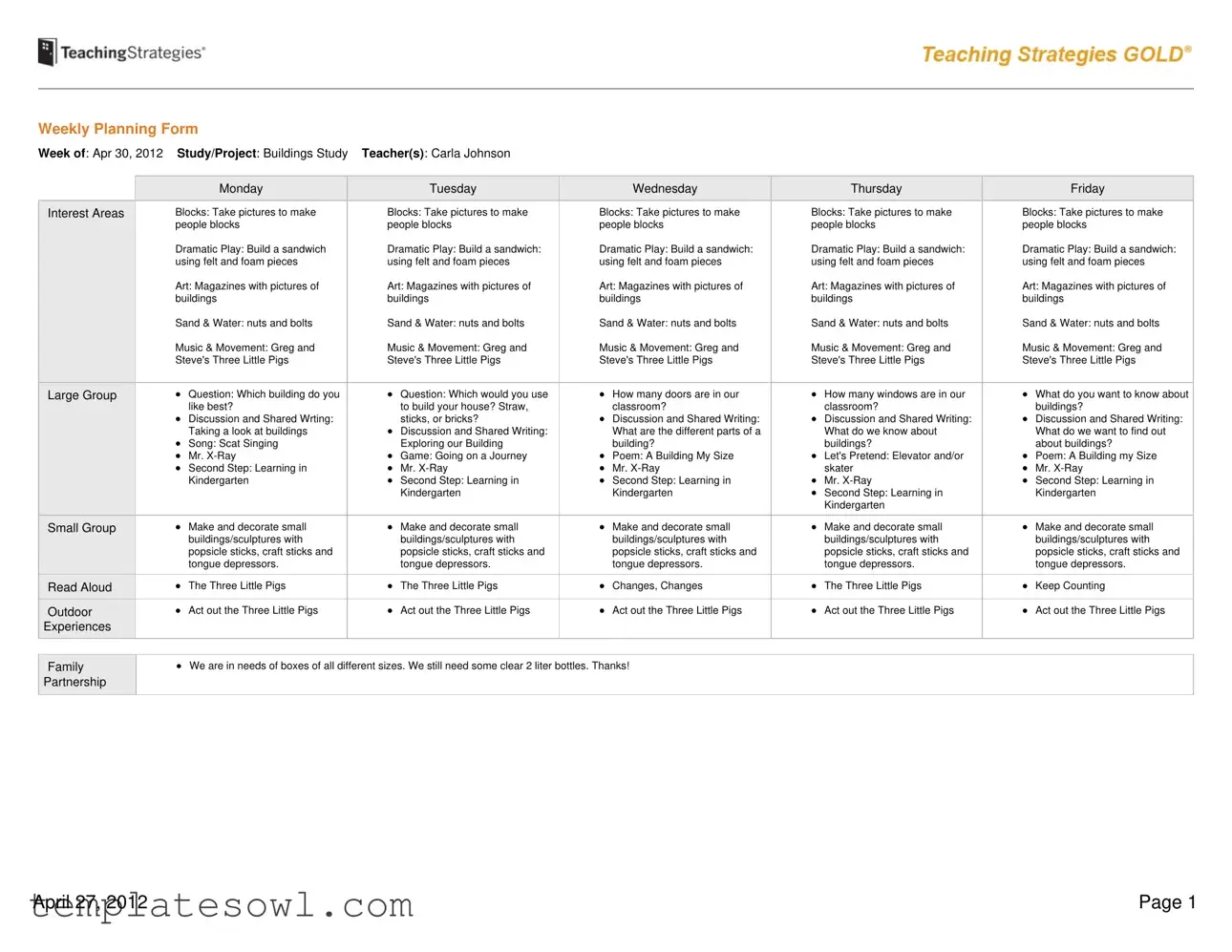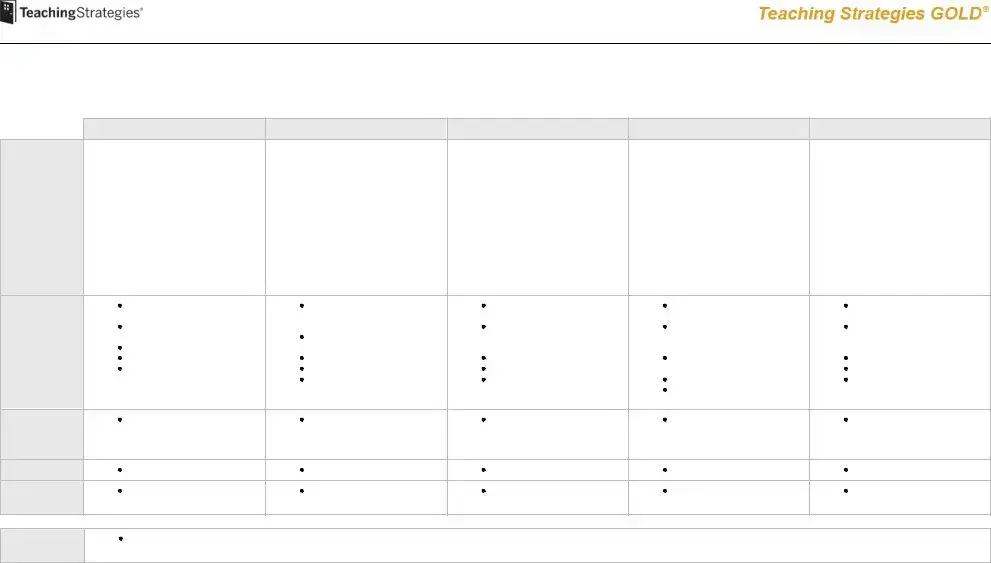What is the purpose of the Weekly Planning Form?
The Weekly Planning Form serves as a structured outline for educators to organize their weekly activities. It provides details on study projects, interest areas, and specific activities that facilitate learning. The form helps ensure that the curriculum aligns with educational goals and learning outcomes.
How should teachers fill out the form for each week?
Teachers should begin by indicating the week’s date and the study or project focus. Next, under the interest areas, they should list both large and small group activities. For each day of the week, specific activities should be documented, detailing the content, method, and learning objectives. Collaboration with other teachers is encouraged to enrich the content.
What types of activities are included in the form?
Activities vary throughout the week and can include blocks, dramatic play, art projects, and music and movement. Each activity is designed to promote engagement and learning. Examples may include building a sandwich during dramatic play or taking pictures to create people blocks, providing a hands-on approach to the educational process.
How does the form support discussion and shared writing?
The form incorporates designated discussion questions and prompts related to the activities for each day. This encourages children to express their thoughts about buildings and encourages collaborative writing. Such discussions enhance vocabulary development and comprehension skills among the students.
What role do materials play in the Weekly Planning Form?
Materials are essential for effective learning experiences. The form includes requests for specific items, such as boxes and clear 2-liter bottles, which educators seek from families to facilitate planned activities. Adequate materials ensure that projects can be completed successfully and effectively engage students.
How does the form integrate learning concepts from Second Step?
The Weekly Planning Form incorporates elements from the Second Step curriculum, which focuses on social-emotional learning. Activities are intertwined with lessons from Second Step, encouraging students to develop their interpersonal skills and emotional awareness while engaging in fun, creative projects.
Is there a specific format required for reporting the activities?
The format provided by the Weekly Planning Form emphasizes clarity and consistency. Activities are clearly laid out for each day, allowing for easy reference and planning. Teachers can add notes and adjustments as needed, encouraging flexibility while maintaining an organized approach to lesson planning.

